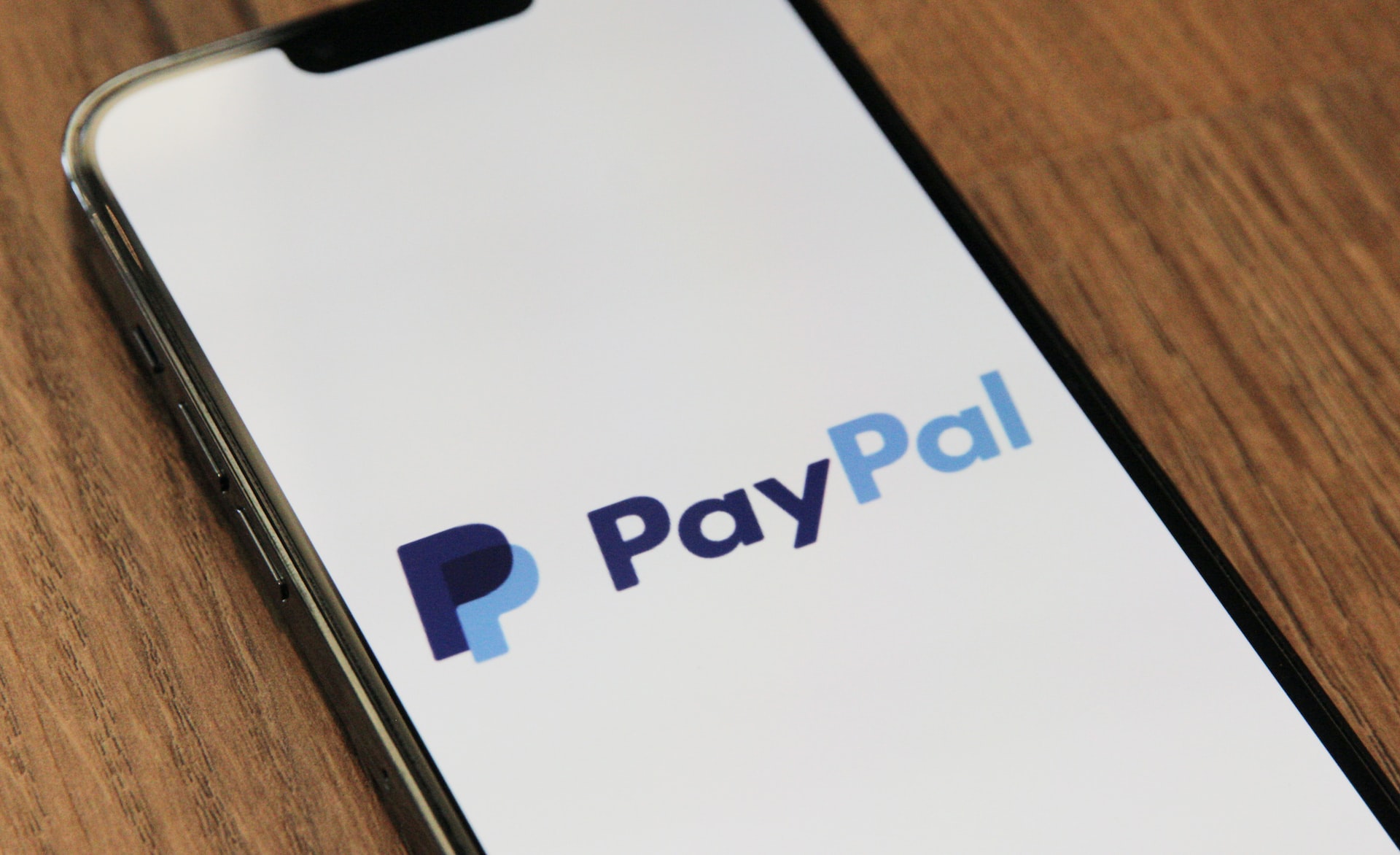Payment Processing with PayPal Vs. Stripe — a Comparison Review
Do you want to accept payments online?
Would you like to collect payments or donations on your website?
Have you decided between Stripe and PayPal, two of the most popular online payment processing solutions?
Sure, you can accept online payments with PayPal.
And you can accept them with Stripe, too.
These companies are both giants in the online payments industry. Accepting online payments is very easy with both of these services.
So which is better? And in what circumstances?
Read on to get our in-depth comparison on Stripe vs PayPal.
The Basics of Payment Processing
Before we delve into the meat of this article, it’s important to understand a few key concepts first.
Basic knowledge of payment service providers (or PSPs) and payment gateways can only help you as you search for the best method for your business to process online payments.
Payment gateways act as a “middleman” between the payment processor for your business and the larger card network.
In that way, they provide ecommerce platforms (and physical locations) a method of authorizing online payments.
Payment Service Providers also act as sort of a middleman.
Consider business owners, on the one hand. In order to send and receive payments, those business owners rely on merchant accounts and other technology required to fully process those payments.
Payment Service Providers provide the payment gateway required to process those payments, and they also provide a merchant account to process them through.
Stripe and PayPal are both payment service providers, both offering all that you need to start accepting payments.
One more important caveat about both Stripe and PayPal is that they are payment aggregators.
What does that mean, though?
Although they offer true payment gateways, payment processors like Stripe and PayPal do not offer true Traditional Merchant Accounts.
Instead, their customers are all grouped under one huge merchant account.
This makes it easy for business owners to get approved quickly so they can start processing credit card payments.
On the other hand, these aggregators don’t truly know your business. So if it is behaving strangely, or if the PSP suspects fraud, they have little recourse other than to freeze or close your Stripe or PayPal account.
It’s also important to know that when it comes to freezing and holding accounts, aggregators like Stripe and PayPal have a pretty poor track record.
You may endure delays in processing; especially given that they don’t tolerate chargebacks and fraud very well.
That said, if you want to get up and running quickly, services like Stripe and PayPal are hard to beat.
Stripe vs. PayPal
If you’re just getting started processing online payments, you will need some method of payment processing.
To do this, it’s easy to get started with either Stripe or PayPal.
Both services enable you to accept payments from people who want to give you money, whether for donations or purchases.
Then comes the good part — they direct that money into your bank account!
Both Stripe and PayPal charge you transaction fees.
Fees charged to an online business are typically higher than those charged to a traditional retail business.
That said, both Stripe fees and PayPal fees are both pretty low, all things considered.
What are These Services Used For?
Stripe (so named for the magnetic stripe on the back of many credit cards) is an online payment processor that enables people to send and receive money online.
So what can a Stripe account do?
Stripe is getting very popular in the world of eCommerce, largely due to its customizable development tools.
These make it quite popular with people who are code-savvy and companies with teams of in-house programmers.
Stripe can be a great choice for small businesses.
But larger operations such as TaskRabbit, Lyft, Blue Apron, and Pinterest frequently use it too.
And even after you set up your online payment platform with Stripe, it keeps working for you and your business.
Stripe enables you to manage, process, reconcile and process each and every one of your online transactions, all through your Stripe platform and dashboard.
Here are a few of the additional services Stripe offers its users for free:
- Stripe Elements: This customizable User Interface toolkit (UI) enables any merchant to create their own distinctive payment form — whether it be for desktop, tablet, or mobile payment use.
- Embeddable Checkout: Stripe allows your custom payment forms to be embeddable in your website, meaning your customers never have to leave in order to complete their checkout process.
- Stripe Sources: Stripe’s Sources application programming interface (API) enables a merchant to use a single integration to accept payment methods from all over the world. A few of the accepted payment methods are Giropay, Alipay, and Bancontact. It’s also possible to use Stripe.js (JavaScript) to create your own checkout form using their APIs.
- Stripe Billing: This service allows you to send customized invoiced to your customers and request payment from them. It also allows you to use direct ACH bank transfers. You can create any kind of payment structure, including scheduled, promotional, tiered, recurring, and usage-based payments.
PayPal, on the other hand, is a payment processor that lets customers receive and process payments online.
Founded in late 1998, PayPal was one of the first companies to offer an online payment gateway service. As such, they are very well-known.
PayPal’s solutions can be considerably simpler than Stripe’s.
That does not mean, however, that they are less powerful.
After all, nearly everyone is familiar with PayPal, making it one of the most widely used services for online debit card payments and credit card transactions.
Recently, PayPal has come into greater feature parity with Stripe. This is offered through their paid service known as Payflow Pro (PayPal Payments Pro).
Payflow Pro enables you to put a hosted PayPal payments page on your website.
It offers features such as buyer authentication, advanced fraud protection, and recurring billing.
Using PayPal’s Payflow Gateway APIs, a merchant is able to process any kind of payment or transaction, including authorizations, credit voids, and captures.
PayPal uses the Payflow Payment Gateway and its API internally to provide these same features.
PayPal customers who want complete control over their users’ checkout process can serve their own customer PayPal checkout pages, then send the PayPal transactions to the company through the open Payflow Gateway API.
Or they can also allow PayPal to host the checkout pages, and also manage security for the authorizations and sales.
As of this writing, Payflow Pro costs a business $25 a month, plus PayPal’s regular 2.9% + 30¢.
They also offer PayPal Link, which doesn’t have a monthly fee associated with it.
However, when using this service, you must use a PayPal-hosted payment template, rather than a custom one hosted on your site.
According to PayPal, they serve over 21 million merchants and over 267 million user accounts.
Practically everyone has some kind of PayPal account these days, making it one of the most easy-to-recognize names in the world of online payments and merchant services.
Stripe vs. PayPal — Quick Facts
When seeking a good payment gateway for your business, it’s a good idea to compare each of the different services to make sure you’re getting the one that works best for you.
Let’s look at some basic facts about PayPal and Stripe.
Please note: These fees are for U.S.-based customers. The fees for international transactions may vary if you’re in a different country.
Transaction Fees and Discounts
Per transaction, both Stripe and PayPal charge a fixed fee of 2.9% + 30¢
If a transaction is classified as a “micropayment,” or is less than $10, the transaction fees are a bit different:
- Stripe charges a transaction fee of 5% + 10¢, subject to the RADAR fee, discussed below
- PayPal charges a transaction fee of 5% + 5¢
If you want to use Recurring Billing, Stripe will charge you 0.5% or more.
PayPal doesn’t charge for this service.
Neither service charges any monthly fees, and as of this writing, there are no additional fees.
If you’re running a non-profit organization, both PayPal and Stripe will offer you a discount on your processing fees.
- Stripe offers a 2.2% + 35¢ discount, subject to the RADAR fee, discussed below
- PayPal offers a 2.2% + 30¢ discount
Support, Setup, and Contract
Both Stripe and PayPal offer support through email and Help Centers.
Stripe offers 24/7 support by phone and live chat.
PayPal does the same, but they are closed for part of the day.
Both Stripe and PayPal do not charge any setup fees.
Neither service requires a contract.
Both services are very easy to use. PayPal is very easy to set up, whereas Stripe is a little more difficult.
Chargebacks and Refunds
A chargeback happens when a customer tells their bank they’ve been charged erroneously.
This happens when they see a transaction they think is fraudulent, or that they happen to not agree with.
This practice exists to protect the cardholder.
However, this process of refunding money is sometimes overused. Therefore, your business will end up paying a fee every time a chargeback is made.
Stripe charges a $15 fee for every chargeback.
PayPal charges $20 for every chargeback.
When a customer gets a refund, neither Stripe nor PayPal will return any portion of the fees charged.
PCI Compliance
Both PayPal and Stripe are completely compliant with the Data Security Standards of the Payment Card Industry (PCI-DSS).
Availability
As of this writing, PayPal is available in 200+ countries.
Stripe can be used in 32+ countries.
Accessing Your Money
When using PayPal, your funds are typically available immediately.
With Stripe, it takes an average of two days before you can access funds acquired through transactions.
Data Portability
Stripe allows you to export any non-PCI-regulated data (such as subscription or payment history information) using its dashboard or through the Stripe API.
PayPal does not allow you to export data, but it does offer a PayPal Credit Card Vault tool.
Invoicing and Card Readers
Both Stripe and PayPal offer online invoicing free of charge.
Using Stripe, invoicing is free for your first $1 million in sales.
Regarding card readers: If you have a brick and mortar store and need a reader device to process both physical and virtual cards, Stripe will charge you for it.
As of this writing, they do not offer readers for free. PayPal offers both free and paid options for card readers.
Stripe RADAR Fees
The RADAR charge is a 5-cent fee that Stripe levies on every attempted transaction.
This will be charged even if the payment fails for whatever reason.
For example, if a customer enters the wrong CVV card number, you will be assessed a RADAR fee for that attempt.
When they try again, a second fee will be charged, and so on.
Nonprofits are charged these fees, although they are waived for Standard accounts.
Stripe vs. PayPal — In-Depth
Let’s look at each of these features in a little more depth.
Stripe vs. PayPal — Setup and Ease of Use
Stripe and PayPal are both known for being easy to set up, and easy to use.
Both are easy ways of accepting payments online. Not only that, but their payment gateways are super easy to use as well.
Stripe is very customizable and offers a lot of great features, such as the Pay With Card button.
You can embed this convenience anywhere on your website.
However, doing so requires some developer knowledge that not everyone has. So too with its customization features.
PayPal is a bit more “bare-bones,” but it is simple to set up and use PayPal as your primary payment platform.
Stripe vs. PayPal — Customer Support
Stripe has a variety of ways to reach them with your questions.
They have a social media presence, a help center, chat support channels with developers and support reps, as well as email and phone support.
PayPal also has several ways to obtain answers.
Not only do they host a robust help center, but their customer support team also talks with customers through social media and a community forum.
They also offer support via phone and live chat.
The main difference is that PayPal’s support team closes during certain hours of the day.
Stripe, however, recently added options for 24/7 chat and phone support.
Premium Support is also available, which is a paid service that offers extra features.
Stripe has also added an option for paid Premium Support with extra features:
- Prioritized Response
- Dedicated Support Hub (located in your Dashboard)
- Dedicated Support Manager, who will retain ongoing context regarding your business
- Emergency Support
- Customized Insights (provided quarterly)
As of this writing, Stripe’s Premium Support is available in the United States, as well as the United Kingdom, Ireland, and Canada.
Stripe vs. PayPal — Security and Data Portability
Both Stripe and PayPal are PCI Compliant. That means they both meet the strictest standards of the industry.
Both services store cardholder data securely, and they keep your PayPal balance safe.
Data Portability is the term for moving data from one service to another.
This becomes important if you find that you want to move all your data to another payment processor that is not Stripe or PayPal.
Stripe values Data Portability, so they’ll help you move your credit card data in a PCI compliant way.
If you use PayPal, it’s important to know that if at some point you want to switch processors, they won’t give you your data easily.
Sure, PayPal might be in it for the long haul. Still, some people value having the option to move their transaction data if they want to.
Stripe vs. PayPal — Time to Access Funds
Stripe automatically moves funds from Stripe into your bank account. It usually takes around two days for this to happen.
PayPal funds are available immediately, but it takes 2-4 days for them to move the funds into a separate bank account.
Stripe vs. Paypal — Online Invoicing and Card Readers
Both PayPal and Stripe both offer free online invoicing.
There are no conditions on how PayPal offers this service.
On the other hand, with Stripe, online invoicing is free until you have over $1 million in sales.
Right now you might think that’s a lot, but if you’ve got a solid business model, it can be surprising how fast your sales numbers can add up!
As for card readers: If you have a store with a physical presence, and you’re wanting to add an online component — doing that is easy with either Stripe or PayPal.
Both services allow processing payments using the same account, whether the point of sale is in an online store or at a physical location.
Many point of sale systems already offer direct PayPal integration.
Additionally, both PayPal and Stripe have physical card readers you can use.
You can buy one from either service, and PayPal also has readers they’ll give you for free.
Stripe vs. PayPal — Handling Payments
Using Stripe, people don’t have to leave your website in order to pay you.
On the other hand, PayPal users have to exit your business website, sign in to their PayPal account, authorize the transaction, then get redirected back to your site.
This might not be ideal for a business that wanted to keep its branding and messaging consistent during the entirety of its customer’s buying process.
That said, this extra step might not bother some business owners because most people are pretty familiar with it.
Still, if branding is important to you, then it’s a factor to consider.
Stripe vs. PayPal — The Final Word
PayPal is a large and well-known online payment service.
Stripe is another popular payment processor.
Both of these services can provide all the technology you need to start your online business rocking and rolling.
This includes payment gateway and even merchant account functionality.
Both services charge a pretty low fee: Only 2.9% + 30¢.
At one time, Stripe offered a variety of different processes, each of them relatively low-tech.
Now that Stripe is more mature, however, they have streamlined all of these low-tech offerings into a single technology-enabled package.
Stipe is also more friendly to developers than PayPal is. Its services are both engineer-facing and customizable, while PayPal’s offerings are not aimed at technology pros.
They are also not nearly as customizable as Stripe’s.
Thus, Stripe can easily be used in a business that values consistent branding. It can even be used as a white-label solution.
To this point, major shopping card operators like Shopify use Stripe behind-the-scenes.
And you won’t have to pay through the nose for this option, either.
An additional area where Stripe wins out is in reporting.
Sure, PayPal comes with a host of built-in reports to access.
Stripe, on the other hand, enables you to create custom reports so you get the exact information you need.
Stripe has an offering called Stripe Sigma, which allows you to ask any question using SQL (Structured Query Language) and get a report on it.
All that said, PayPal is often the best choice for a small online business because it’s easy to use and can be set up in a matter of minutes.
Stripe offers many additional features and can be more customized, making it a good alternative for a tech-forward business, larger entities, and those with access to engineering teams.










